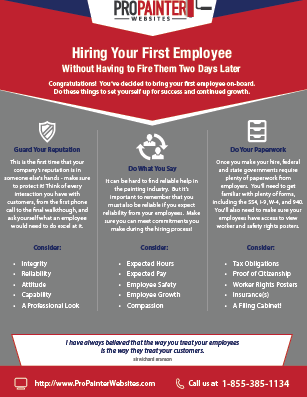Weather'S Impact On Commercial Exterior Painting: Critical Understanding For Success
Weather'S Impact On Commercial Exterior Painting: Critical Understanding For Success
Blog Article
Post By-Cash Kofoed
When you're intending a business exterior paint job, do not take too lightly the impact of climate on your results. You need to think about factors like temperature level, humidity, and precipitation, as they can make or damage your paint task. For example, did you recognize that optimal conditions call for details temperature level ranges and humidity levels? Falling short to keep an eye on these aspects can cause unequal surfaces or even damage to fresh paint. Recognizing these aspects is essential to achieving a resilient, specialist outcome. So, what particular weather conditions should you be wary of?
Temperature level Considerations
When it pertains to commercial outside painting, temperature level plays an important duty in the outcome of your task. If you're repainting in extreme warm, the paint can dry too quickly, leading to concerns like poor attachment and unequal finishes. You want to aim for temperatures in between 50 ° F and 85 ° F for the very best outcomes. Below 50 ° F, paint may not cure appropriately, while over 85 ° F, you run the risk of blistering and cracking.
Timing your project with the ideal temperatures is important. Begin your job early in the morning or later on in the afternoon when it's cooler, especially during warm months.
Likewise, take into consideration the surface area temperature; it can be considerably higher than the air temperature level, particularly on bright days. Use a surface area thermostat to examine this before you begin.
If temperatures are uncertain, keep an eye on the weather prediction. Unexpected temperature level decreases or heat waves can hinder your plans. You do not wish to start repainting just to have the conditions alter mid-project.
Humidity Degrees
Humidity levels considerably influence the success of your commercial outside paint job. When office painting is too expensive, it can prevent paint drying out and healing, causing a series of problems like poor adhesion and end up top quality.
If you're intending a job during damp problems, you could discover that the paint takes longer to completely dry, which can prolong your job timeline and increase expenses.
Alternatively, reduced humidity can also posture challenges. Paint may dry also quickly, stopping correct application and leading to an irregular coating.
You'll want to keep an eye on the moisture degrees closely to ensure you're functioning within the optimal range, generally between 40% and 70%.
To obtain the very best results, consider using a hygrometer to gauge humidity prior to beginning your job.
If you discover the degrees are outside the ideal variety, you may need to readjust your routine or pick paints developed for variable problems.
Constantly consult the maker's standards for certain referrals on moisture tolerance.
Rainfall Impact
Rainfall or snow can dramatically disrupt your commercial outside paint plans. When precipitation takes place, it can remove newly used paint or develop an unequal surface. Ideally, you wish to select days with dry climate to make certain the paint adheres correctly and remedies efficiently. If you're captured in a shower, it's ideal to stop the job and wait on problems to boost.
In addition, snow can be even more destructive. Not only does it produce a wet surface, yet it can likewise decrease temperatures, making it hard for paint to dry. This can lead to concerns like peeling off or blistering down the line.
It's vital to check the weather report before beginning your job. If rainfall or snow is forecasted, take into consideration rescheduling.
Constantly remember to permit appropriate drying out time in between coats, especially if the weather stays unpredictable.
Conclusion
In conclusion, keeping an eye on the weather condition is essential for an effective industrial external paint task. By keeping find more information on temperature, humidity, and rainfall, you can make certain the very best conditions for application and treating. Bear in mind to intend your job around desirable weather condition and constantly comply with manufacturer guidelines. With the best technique, you'll accomplish a lasting, gorgeous surface that can stand up to the aspects. Don't let the weather catch you off guard-- stay educated and paint clever!
